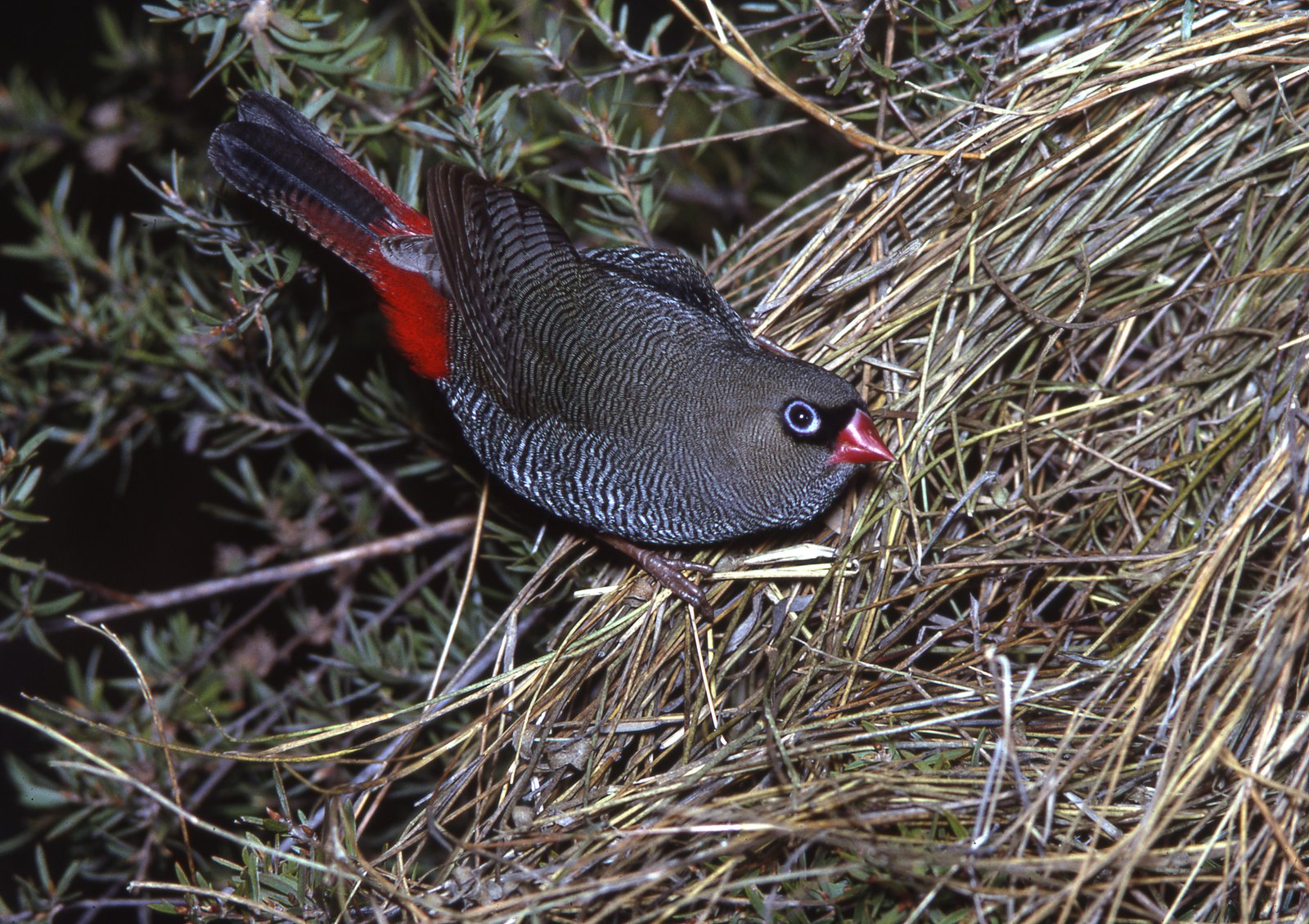Beautiful Firetail
Firetail Finch or Tasmanian Finch
Red-browed Finch,Diamond Firetail

© Australian Museum
When breeding, Beautiful Firetails search for food in pairs. They scuttle around on the ground and are sometimes mistaken for mice as they rustle through the undergrowth.
Identification
The Beautiful Firetail is a small thick-set finch with an olive-brown body and a white breast with dark fine barring. The head has a black mask with pale blue eye ring and fairly thick, red bill. The rump is crimson. The legs and feet are pink-cream. The wings are short and rounded and the tail short and square-tipped. The juveniles are duller than the adults with a smaller eye patch and a blackish bill. They are usually seen in pairs or small family groups.
Habitat
The Beautiful Firetail lives in swampy grassy spots in coastal belts of dry forest, shrubby heath, tea-tree scrub, casuarinas and never far from water.
Distribution
Endemic to south-eastern Australia, the Beautiful Firetail ranges from Newcastle in New South Wales to Kangaroo Island in South Australia but is most common in Tasmania and off shore islands.
Seasonality
Resident with some local movements.
Feeding and diet
The Beautiful Firetail eats mainly grass seeds and the seeds of the casuarinas and tea tree.
Communication
A long sad floating whistle.
Breeding behaviours
The nest of the Beautiful Firetail is shaped like a bottle on its side with a long tunnel leading to a round egg chamber. It is found in dense foliage near the ground. The nest is constructed of thin grass stems and lined with feathers. Both birds construct the nest, share the incubation of the eggs and care of the young.
- Breeding season: September to January
- Clutch size: Four to eight
- Incubation: 20 days
- Time in nest: 20 days
Conservation status
Along with the clearing of the scrub habitat to build human dwellings, and fragmentation of habitat, the domestic cat threatens this small bird.
References
- Strahan, R. (ed) 1996. Finches, Bowerbirds and Other Passerines of Australia.Angus and Robertson and the National Photographic Index of Australian Wildlife, Sydney.
- Simpson, K and Day, N. 1999. Field guide to the birds of Australia, 6th Edition. Penguin Books, Australia.
- Higgins, P.J., Peter, J.M. and Cowling, S.J. (eds) 2006. Handbook of Australian, New Zealand and Antarctic Birds, Volume 7 (Dunnock to Starlings) Part B Oxford University Press. Melbourne.


